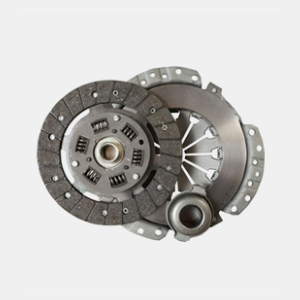-
 Afrikaans
Afrikaans -
 Albanian
Albanian -
 Amharic
Amharic -
 Arabic
Arabic -
 Armenian
Armenian -
 Azerbaijani
Azerbaijani -
 Basque
Basque -
 Belarusian
Belarusian -
 Bengali
Bengali -
 Bosnian
Bosnian -
 Bulgarian
Bulgarian -
 Catalan
Catalan -
 Cebuano
Cebuano -
 China
China -
 Corsican
Corsican -
 Croatian
Croatian -
 Czech
Czech -
 Danish
Danish -
 Dutch
Dutch -
 English
English -
 Esperanto
Esperanto -
 Estonian
Estonian -
 Finnish
Finnish -
 French
French -
 Frisian
Frisian -
 Galician
Galician -
 Georgian
Georgian -
 German
German -
 Greek
Greek -
 Gujarati
Gujarati -
 Haitian Creole
Haitian Creole -
 hausa
hausa -
 hawaiian
hawaiian -
 Hebrew
Hebrew -
 Hindi
Hindi -
 Miao
Miao -
 Hungarian
Hungarian -
 Icelandic
Icelandic -
 igbo
igbo -
 Indonesian
Indonesian -
 irish
irish -
 Italian
Italian -
 Japanese
Japanese -
 Javanese
Javanese -
 Kannada
Kannada -
 kazakh
kazakh -
 Khmer
Khmer -
 Rwandese
Rwandese -
 Korean
Korean -
 Kurdish
Kurdish -
 Kyrgyz
Kyrgyz -
 Lao
Lao -
 Latin
Latin -
 Latvian
Latvian -
 Lithuanian
Lithuanian -
 Luxembourgish
Luxembourgish -
 Macedonian
Macedonian -
 Malgashi
Malgashi -
 Malay
Malay -
 Malayalam
Malayalam -
 Maltese
Maltese -
 Maori
Maori -
 Marathi
Marathi -
 Mongolian
Mongolian -
 Myanmar
Myanmar -
 Nepali
Nepali -
 Norwegian
Norwegian -
 Norwegian
Norwegian -
 Occitan
Occitan -
 Pashto
Pashto -
 Persian
Persian -
 Polish
Polish -
 Portuguese
Portuguese -
 Punjabi
Punjabi -
 Romanian
Romanian -
 Russian
Russian -
 Samoan
Samoan -
 Scottish Gaelic
Scottish Gaelic -
 Serbian
Serbian -
 Sesotho
Sesotho -
 Shona
Shona -
 Sindhi
Sindhi -
 Sinhala
Sinhala -
 Slovak
Slovak -
 Slovenian
Slovenian -
 Somali
Somali -
 Spanish
Spanish -
 Sundanese
Sundanese -
 Swahili
Swahili -
 Swedish
Swedish -
 Tagalog
Tagalog -
 Tajik
Tajik -
 Tamil
Tamil -
 Tatar
Tatar -
 Telugu
Telugu -
 Thai
Thai -
 Turkish
Turkish -
 Turkmen
Turkmen -
 Ukrainian
Ukrainian -
 Urdu
Urdu -
 Uighur
Uighur -
 Uzbek
Uzbek -
 Vietnamese
Vietnamese -
 Welsh
Welsh -
 Bantu
Bantu -
 Yiddish
Yiddish -
 Yoruba
Yoruba -
 Zulu
Zulu
Effective Solutions for Safeguarding Against Hail Damage to Crops and Property
The Importance of Hail Protection Nets in Agriculture
Hailstorms pose a significant threat to agricultural productivity, causing severe damage to crops and leading to substantial financial losses for farmers. With climate change contributing to the increasing frequency and intensity of hail events, the need for effective protective measures has never been more urgent. One efficient solution gaining traction among farmers is the use of hail protection nets.
Hail protection nets are specially designed nets that are deployed over crops to shield them from hail damage. These nets are typically made from high-density polyethylene (HDPE) or other durable materials that can withstand harsh weather conditions. The primary function of these nets is to absorb the impact of falling hailstones, preventing them from reaching the plants below. This simple yet effective barrier can significantly reduce the damage caused by hail, allowing farmers to protect their livelihoods.
The benefits of hail protection nets extend beyond just protecting crops from hail damage. These nets provide additional advantages, such as shading, which can help regulate temperature and protect delicate plants from excessive sunlight. By creating a microclimate, they can also retain moisture and reduce water evaporation, leading to more efficient irrigation practices. As a result, farmers are not only safeguarding their crops but also enhancing their overall agricultural productivity.
hail protection net

Moreover, the installation of hail nets can prove to be a smart investment in the long run. While the initial cost of purchasing and setting up these nets can be a barrier for some farmers, the potential savings from reduced crop losses and increased yields make them worthwhile. In fact, some farmers have reported a return on investment of several times their initial expenditure after implementing hail protection systems. This financial incentive encourages more growers to adopt such protective measures.
Environmental considerations also play a role in the increasing popularity of hail protection nets. As agriculture seeks to find sustainable and eco-friendly solutions, these nets fit well into the narrative of responsible farming. By minimizing the loss of crops and resources due to hail damage, farmers can operate more sustainably and contribute to food security, which is critical in our ever-changing world.
Nevertheless, the implementation of hail protection nets does require careful planning and consideration. Farmers need to assess their specific needs based on their crop types and the local climate. Choosing the right mesh size and net strength is vital to ensure that the nets provide adequate protection while allowing sufficient light and air circulation to the plants.
In conclusion, hail protection nets are becoming an essential tool for farmers facing the threat of hail damage. By providing a cost-effective and environmentally friendly solution, these nets not only safeguard crops but also promote sustainable agricultural practices. As farmers increasingly adopt these protective measures, they can enhance their resilience against unpredictable weather patterns and secure their livelihoods for the future.
-
Shipping Plastic Bags for Every NeedNewsJul.24,2025
-
Safety Netting: Your Shield in ConstructionNewsJul.24,2025
-
Plastic Mesh Netting for Everyday UseNewsJul.24,2025
-
Nylon Netting for Every UseNewsJul.24,2025
-
Mesh Breeder Box for Fish TanksNewsJul.24,2025
-
Expanded Steel Mesh Offers Durable VersatilityNewsJul.24,2025











